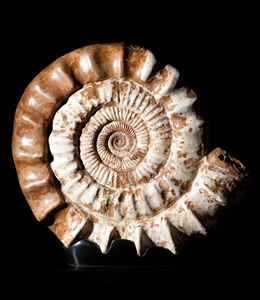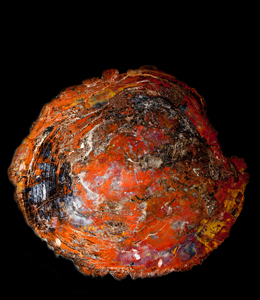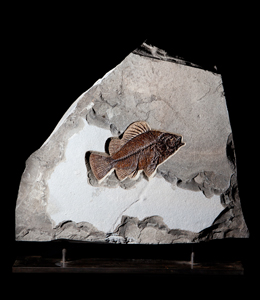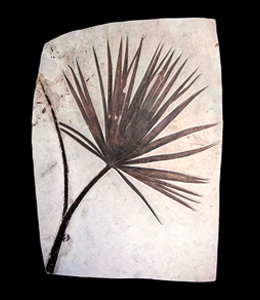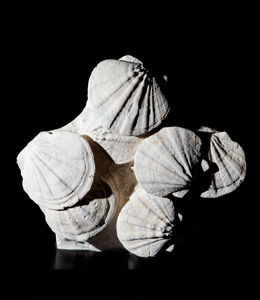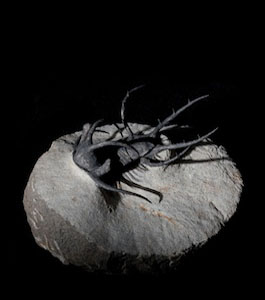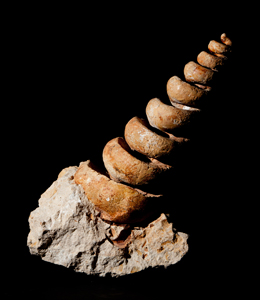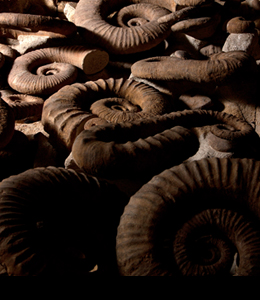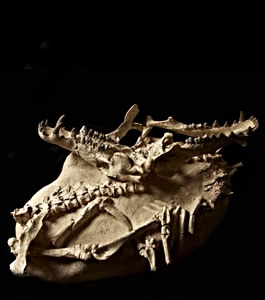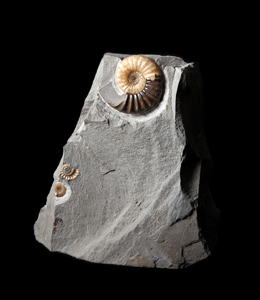Wall Hangings
Ammonites
High-quality ammonite fossils are prized by collectors and paleontologists alike for their intricate beauty and significant scientific value. Ammonites, cephalopods closely related to modern squids and octopuses, flourished during the Mesozoic era, and their fossils are often found in a variety of sedimentary rock formations. What makes these fossils particularly captivating are the complex suture patterns and chambered shells that exhibit a stunning array of colors and textures when well-preserved. The detailed coiling and intricate designs of their shells not only provide aesthetic appeal but also serve as important indicators of the environmental conditions in which they lived, offering insights into ancient marine ecosystems. The study of high-quality ammonite fossils is crucial for understanding evolutionary trends and biostratigraphy during the Mesozoic period. Ammonites are known for their rapid evolutionary changes, which makes them excellent index fossils for dating geological layers and correlating the ages of rock formations across different regions. Their diverse forms and structures allow researchers to track changes in marine biodiversity and the effects of environmental shifts, such as climate change and mass extinctions. As paleontologists continue to uncover and analyze these remarkable fossils, high-quality ammonites remain invaluable tools for reconstructing the history of life on Earth and the dynamic processes that have shaped our planet's geological past.
Crinoids
Crinoid fossils, often referred to as "sea lilies," represent an intriguing group of marine organisms that thrived in Earth's oceans for hundreds of millions of years. Belonging to the class Crinoidea, these echinoderms are characterised by their cup-shaped bodies and feathery arms, which they used for filter feeding on plankton and organic particles. Fossils of crinoids are commonly found in sedimentary rock formations, where their intricate structures are preserved, offering a glimpse into the diverse ecosystems of the past. The presence of crinoid fossils in various geological layers indicates their adaptability and widespread distribution, showcasing their importance in ancient marine environments. The study of crinoid fossils provides valuable insights into the evolutionary history of echinoderms and the ecological dynamics of prehistoric seas. Crinoids have a long fossil record, dating back to the Cambrian period, and their diverse forms allow palaeontologists to reconstruct ancient marine habitats and climate conditions. By analysing the morphology and distribution of crinoid fossils, researchers can infer information about past biodiversity, sedimentary processes, and even the effects of mass extinction events on marine life. As ongoing research continues to uncover new findings, crinoid fossils remain essential to understanding the complexities of Earth's biological history and the evolution of marine ecosystems.
Fossil Wood
Fossilised wood, commonly known as petrified wood, is primarily found in sedimentary rock formations, volcanic ash deposits, and riverbeds across various regions of the world. Notable locations include the Petrified Forest National Park in Arizona, the forests of the John Day Formation in Oregon, and parts of Argentina and Germany. These sites often contain large quantities of fossilised trees that have undergone the process of per-mineralization, where mineral-rich water seeps into the plant material. Over time, the organic components of the wood are replaced by minerals like silica, calcite, or pyrite, turning the wood into a dense, stone-like structure while preserving its original cellular patterns and growth rings. The preservation of fossilised wood is a remarkable process that requires specific conditions to be effective. Typically, the wood must be buried quickly under sediment to protect it from decay and from being broken down by bacteria or environmental factors. The mineralization process begins when groundwater rich in dissolved minerals permeates the wood, gradually replacing the organic material cell by cell. This not only preserves the structure of the wood but can also lead to vibrant colour variations due to the different minerals involved in the process. As a result, fossilised wood can provide valuable insights into ancient ecosystems, including the types of trees that existed and the environmental conditions of the time, making it an important focus of study in paleobotany and geology.
Fossil Fish
Rare fossil fish are often celebrated not only for their scientific significance but also for their aesthetic appeal, making them highly sought after by collectors and art enthusiasts alike. One notable example is the fossil fish from the Solnhofen Limestone in Germany, which dates back to the Late Jurassic period, approximately 150 million years ago. This formation is renowned for its exquisite fossils, including species such as Saurichthys and Dapedius. The remarkable preservation of these fish in fine-grained limestone allows for intricate details to be displayed, from the delicate patterns of scales to the graceful outlines of fins. Many of these specimens are displayed in museums and galleries, where their natural beauty captivates audiences, often evoking admiration akin to that reserved for traditional works of art. Similarly, the Green River Formation in the United States, dating to the Eocene epoch around 50 million years ago, yields rare fossil fish that are appreciated for both their scientific and artistic value. Fossils such as Knightia and Diplomystus are often showcased in polished displays that highlight their stunning details and vibrant colours. The unique preservation conditions of this formation result in fossils that can be presented as striking wall art or decorative pieces, blending natural history with artistic expression. Collectors and artists alike value these rare fossil fish not only for their insights into ancient ecosystems but also for their ability to evoke a sense of wonder and appreciation for the intricate beauty of nature, bridging the gap between science and art.
Palm Fronds
Rare fossil palm fronds provide a fascinating glimpse into ancient ecosystems, showcasing the diversity of plant life that existed millions of years ago. These fossils, often found in sedimentary rock formations, capture the intricate details of palm leaves, including their unique shapes and textures. The preservation of these fronds allows researchers to study not only the morphology of ancient palms but also the climatic conditions of the periods in which they thrived. By examining fossil palm fronds, paleobotanists can infer information about past environments, such as tropical and subtropical climates, and the types of ecosystems that supported these lush plants. The rarity of fossil palm fronds adds to their scientific and aesthetic value, making them sought after by collectors and researchers alike. Fossilized palms are often found in deposits that indicate specific geological periods, providing insights into the evolutionary history of flowering plants. As these fronds can reveal details about ancient flora and their relationships with other species, they play a crucial role in reconstructing the ecological dynamics of prehistoric landscapes. The study of these rare fossils not only enhances our understanding of plant evolution but also contributes to broader discussions about climate change and biodiversity through geological time, highlighting the resilience and adaptability of life on Earth.
Pectens
Pectens are a family of bivalve, or molluscs including the scallop and closely related to the clam and oyster. These beautifully preserved Prehistoric Scallops has been artistically and expertly prepared revealing them from the surrounding Bedrock allowing this impressive and desirable display. These highly decorative fossils come in big blocks, smaller freeform shapes and even individual shell form.
Trilobites
Trilobites were among the early arthropods, a phylum of hard-shelled creatures with multiple body segments and jointed legs. Amazingly there are over 20,000 described species of Trilobite. New species of trilobites are unearthed and described every year. This makes trilobites the single most diverse class of extinct organisms, and within the generalized body plan of trilobites there was a great deal of diversity of size and form making them very popular with fossil collectors.
Marine Life
Although "Marine Life" may seem like a general term that covers a large range of fossils, this section is far from average & features an impressive selection of some of the finest marine fossils you'll see anywhere in the world today. Ranging from Jurassic Ichthyosaurs to Fossilised Turtles and Sea Urchins we have pieces covering many millions of years of this planets interesting marine history.
The Atlas Medusa
Originally discovered in The Atlas Mountains five years ago this miraculous find has undergone a three year excavation and preparation period. This extraordinary museum quality piece has to be seen to be believed.
